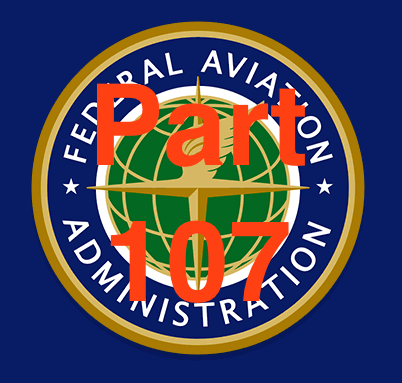 The final version of Part 107, the Small UAS Rule for commercial drone operation, was published to the Federal Register this morning. The official effective date has been listed as August 29, 2016.
The final version of Part 107, the Small UAS Rule for commercial drone operation, was published to the Federal Register this morning. The official effective date has been listed as August 29, 2016.
The drone industry has been waiting for the final publication of the rule for several years, and experts questioned whether the rule would be released according to the FAA’s recent promises of a late spring release. With the release today of the final version of the rule, commercial operators can begin to prepare for the knowledge test that will now be the first step towards commercial certification, eliminating the need for a Section 333 Exemption. FAA officials have said that drone operators may register for the test at an authorized testing center as soon as the rule is enacted.
Provisions of Part 107
In addition to providing the official date that the law will become active, the publication of the ‘Operation and Certification of Small Unmanned Aircraft Systems’ in the Federal Register provides complete details and the following summary of the provisions of Part 107:
- Unmanned aircraft must weigh less than 55 lbs. (25 kg).
- Visual line-of-sight (VLOS) only
- At all times the small unmanned aircraft must remain close enough to the remote pilot in command and the person manipulating the flight controls of the small UAS for those people to be capable of seeing the aircraft with vision unaided by any device other than corrective lenses.
- Small unmanned aircraft may not operate over any persons not directly participating in the operation, not under a covered structure, and not inside a covered stationary vehicle.
- Daylight-only operations, or civil twilight (30 minutes before official sunrise to 30 minutes after official sunset, local time) with appropriate anti-collision lighting.
- Must yield right of way to other aircraft.
- May use visual observer (VO) but not required.
- First-person view camera cannot satisfy “see-and-avoid” requirement but can be used as long as requirement is satisfied in other ways.
- Maximum groundspeed of 100 mph (87 knots).
- Maximum altitude of 400 feet above ground level (AGL) or, if higher than 400 feet AGL, remain within 400 feet of a structure.
- Minimum weather visibility of 3 miles from control station.
- Operations in Class B, C, D and E airspace are allowed with the required ATC permission.
- Operations in Class G airspace are allowed without ATC permission.
- No person may act as a remote pilot in command or VO for more than one unmanned aircraft operation at one time.
- No operations from a moving aircraft.
- No operations from a moving vehicle unless the operation is over a sparsely populated area.
- No careless or reckless operations.
- No carriage of hazardous materials.
- Requires preflight inspection by the remote pilot in command.
- A person may not operate a small unmanned aircraft if he or she knows or has reason to know of any physical or mental condition that would interfere with the safe operation of a small UAS.
- Foreign-registered small unmanned aircraft are allowed to operate under part 107 if they satisfy the requirements of part 375.
- External load operations are allowed if the object being carried by the unmanned aircraft is securely attached and does not adversely affect the flight characteristics or controllability of the aircraft.
- Transportation of property for compensation or hire allowed provided that—
○ The aircraft, including its attached systems, payload and cargo weigh less than 55 pounds total;
○ The flight is conducted within visual line of sight and not from a moving vehicle or aircraft; and
○ The flight occurs wholly within the bounds of a State and does not involve transport between (1) Hawaii and another place in Hawaii through airspace outside Hawaii; (2) the District of Columbia and another place in the District of Columbia; or (3) a territory or possession of the United States and another place in the same territory or possession. - Most of the restrictions discussed above are waivable if the applicant demonstrates that his or her operation can safely be conducted under the terms of a certificate of waiver.

Miriam McNabb is the Editor-in-Chief of DRONELIFE and CEO of JobForDrones, a professional drone services marketplace, and a fascinated observer of the emerging drone industry and the regulatory environment for drones. Miriam has penned over 3,000 articles focused on the commercial drone space and is an international speaker and recognized figure in the industry. Miriam has a degree from the University of Chicago and over 20 years of experience in high tech sales and marketing for new technologies.
For drone industry consulting or writing, Email Miriam.
TWITTER:@spaldingbarker
Subscribe to DroneLife here.







Leave a Reply